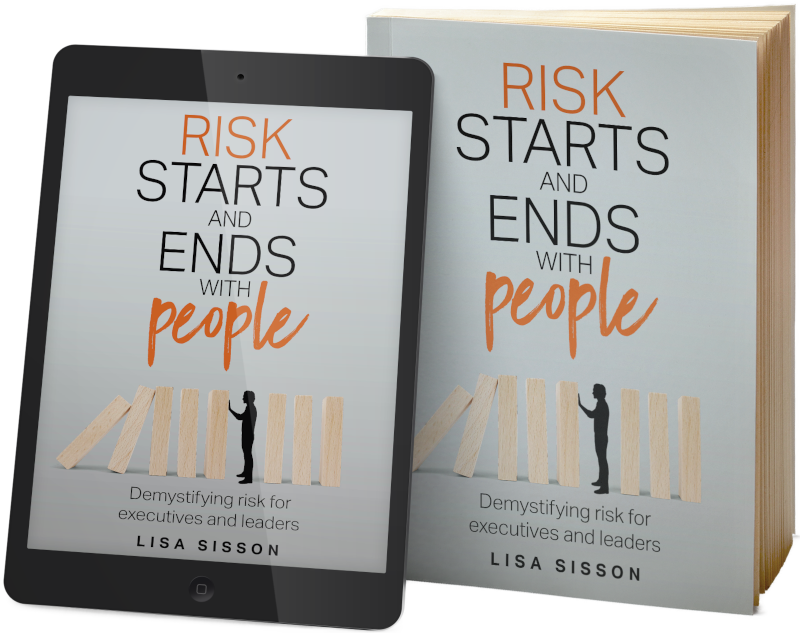Introduction
No organisation can afford to ignore risk. Whether it comes from environmental threats such as floods and fires, human threats such as terrorist attacks or computer viruses, or health threats such as an unexpected global pandemic, we must all plan for the possibility of things going wrong.
But the thing about planning for risk is that it can make us fixate on potential threats. We can become so worried about the things that might happen that we introduce systems of protection that are themselves sources of risk. We set up processes that slow down our businesses, frustrate our employees and create a culture of suspicion and mistrust, and these can cause more harm than the original threats we hoped to protect ourselves against.
In the book ‘Risk Starts and Ends with People‘, you will be presented with a new perspective on risk. You will be shown how to protect yourself more effectively from potential threats, while at the same time creating a workplace culture that is supportive, transparent and resilient.
The stakes are high
The vital importance of getting risk right means that it is also the source of a huge amount of anxiety, and even fear, for those tasked with managing it. Getting risk management wrong can mean the destruction of the organisation’s assets – or its reputation. It can lead to harm being caused to employees or customers, including physical, psychological and emotional damage. For those decision-makers responsible for risk management, getting it wrong can also cause damage to personal reputations, which can end careers.
It’s because of these high stakes that emotional, reactive and downright dangerous decisions are common in risk management. Risk has generated a multibillion-dollar risk management industry, but all too often this industry trades on smoke and mirrors, selling concerned decision-makers solutions that are not adequately explained or customised or, worse, exaggerating threats to encourage leaders to make decisions out of fear.
We have seen this first-hand when working with companies who find themselves lost in a labyrinth of confusing risk management solutions. We’ve seen it when complex technology they have heavily invested in has been unsuccessful in identifying the range or depth of threats expected, often generating more noise and anxiety than useful information. We’ve seen it when a toxic work environment means that managers don’t trust their own teams, or that employees don’t trust the organisation. Many organisations that have addressed risk through tick-box or band-aid, bare minimum solutions have realised that a more holistic, granular and responsive approach is needed.
In the book, you will be introduced to a unique approach that has been highly effective for organisations fixated on risk. Workplaces unravelled by fear, suspicion, disengagement or malice can create the safety to drive transformational outcomes, mitigate risk, open up opportunities and empower their people, free from the fear of failure.
The secret? People.
People are at the very centre of risk, which is why risk starts and ends with people. You’ll come to understand just how powerful this simple statement can be. It will reorient everything you know about risk and give you a sudden and clear view of how risk develops inside an organisation and, crucially, how you can turn it around. You will be introduced to a comprehensive, tried-and-tested framework to ‘protect the house’ – your house. And you’ll learn how to create a Safe Zone, within which you can harness your greatest asset – your people.
Risk Starts and Ends with People is written for CEOs and executives driven by a desire to create meaningful change. It’s for the true leaders who are rolling up their sleeves to do the work that matters.
 The Book
The Book
This book is a practical guide to leaving behind the fear and anxiety associated with risk. It is a toolkit for inspiring your people to become your risk sensors and to identify risk before it has the chance to inflict serious harm. It’s a manual for creating a workplace where people are motivated to come to work, contribute their skills, innovate, problem-solve and push for excellence.
So come on, let’s get started!
Curious to learn more. Click the below button if you like to read the first two chapters of the book or to purchase a copy.
If you have found value in what we have shared, feel free to check out other blogs by the Unearth team and subscribe to our Newsletter. Feel free to reach out to learn more or share your thoughts on the blog or any information we have provided. We would welcome hearing from you through hello@unearth.com.au






